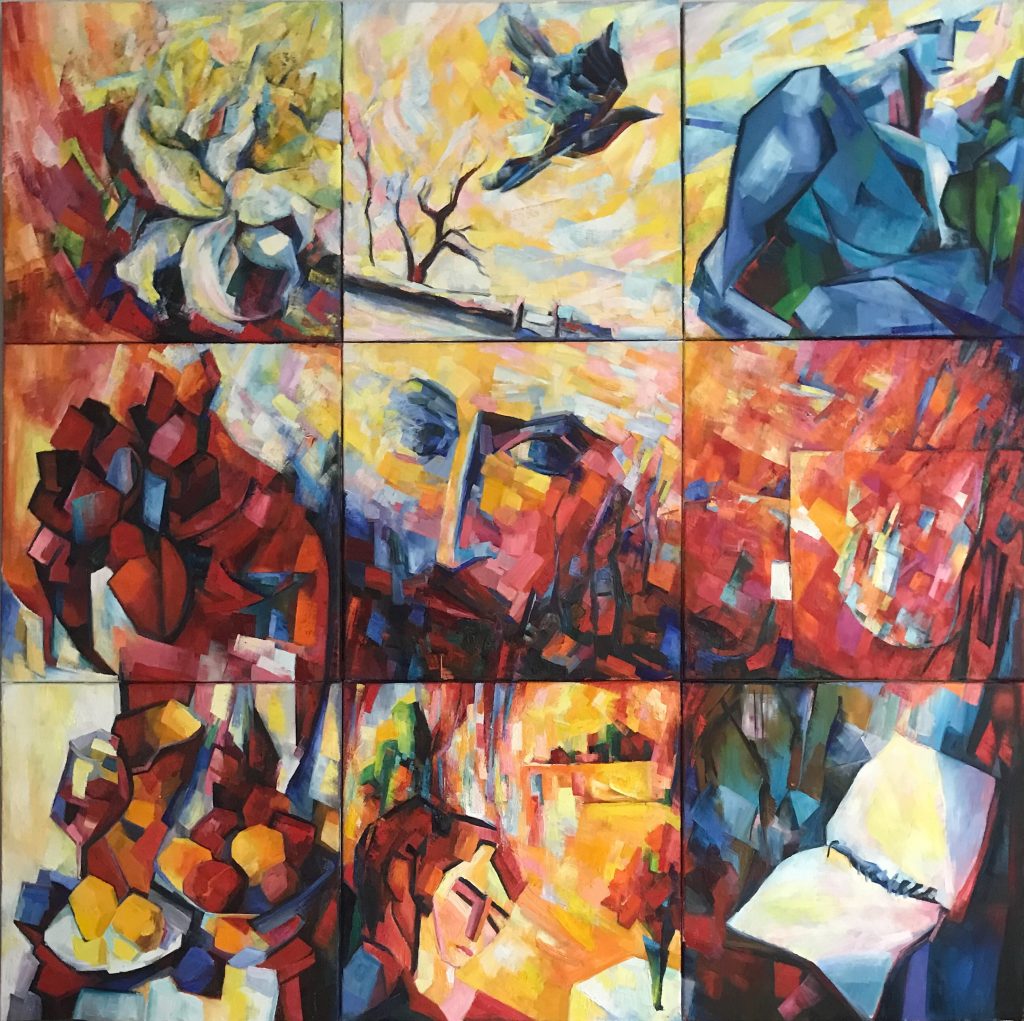
I returned to this set of nine sonnets, 69-77, this fall — during the run-up to the US election amidst the rage of global pandemic… a context so different from five years ago, when I first “completed” this set…
When I began this series, I knew it would take a long time, but I couldn’t quite imagine it would be that long — nor how much the world would change… And although I decided to follow the sequence in its traditional order, from 1 to 154, I knew that this path cannot be neat and linear, and I would return to the earlier sonnets again (and again, and again).
In the painting process, the sonnets started to split themselves into these subsets — chapters, or “collages”, nine or sixteen paintings each. And I accepted this unexpected development, in all its perceived “randomness” — because these “chapters” made sense, revealed new emergent meanings, created some sort of a meta-container for this ever-puzzling sequence.
But what is a unifying meta-meaning here, in this chapter (69-77)?
Death — the premonition of one’s death, the twilight of life — is in the very heart of it (sonnets 71-74), but it is surrounded by seemingly unrelated contemplations of praise, slander, shame, love, and more…
Why? Is there any sense in pushing these sonnets together, into one painting?
This question has been playing games with my mind these two months — appearing and disappearing from my view. One day, absolutely clear — and seemingly non-existent the next morning.
And, unsurprisingly, the painting — this nine-sonnet “meta-painting” — was struggling: one day, a glimpse of unity and harmony would seem to emerge, only to fall apart again into nine individual paintings, which didn’t quite know what they are doing here together…
This unifying theme is as elusive as our sense of self — beyond the experience of being a body, beyond outward appearances — because this mysterious (and maybe even illusory) sense of self is this theme.
So many words we use to point to this experience — mind, soul, spirit… so many places where we try to find it, from the interior world of one’s own consciousness to the myriad reflections in other people’s thoughts and memories, in their praise and in their slander, and in the imprints we leave in the world — in deeds, and words, and art.